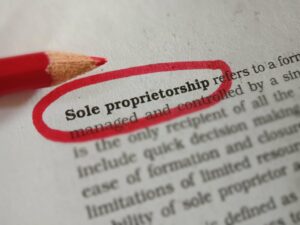Nonprofit Statement of Financial Position or Balance Sheet
While accounting itself can present numerous challenges to the non-accountant business owner, nonprofit accounting can pose an even greater level of confusion. A listing of the titles of the general ledger accounts is known as the chart of accounts. Program expenses (or program services expenses) are the amounts directly incurred by the nonprofit in carrying out its programs. For instance, if a nonprofit has three main programs, then each of the three programs will be listed along with each program’s expenses. Under the accrual method of accounting, revenues are reported in the accounting period in which they are earned.

They are also used for compliance purposes, as regulatory bodies require nonprofits to submit these statements regularly. Additionally, donors and funders often request financial statements to evaluate the financial health and sustainability of an organization before making contributions. In evaluating a nonprofit’s financial position, understanding Liquid Unrestricted Net Assets (LUNA) can provide insights into the organization’s liquidity and potential risk capacity. It’s a measure of how many months your organization can cover its expenses with the liquid assets on hand. Calculating LUNA involves subtracting property and equipment assets from total unrestricted net assets, then dividing by average monthly expenses.
The Nonprofit Statement of Financial Position: What You Need to Know
Moving beyond liabilities, you’ll find net assets on your nonprofit’s Statement of Financial Position, which essentially represent the financial value of your organization. Net assets, otherwise known as equity, is calculated as the difference between what your organization owns statement of financial position non profit (assets) and what it owes (liabilities). Liabilities are typically organized as current and non-current liabilities on the Statement of Financial Position. The closer the liability’s due date is to the balance sheet day, the higher up on the liabilities section it will be.
- For nonprofits, this means making sure that the organization’s net assets are clearly shown and explained.
- This includes segregating duties, conducting regular audits, and maintaining proper documentation.
- The statements noted above are required for financial statements presented in accordance with generally accepted accounting principles in the U.S. (GAAP).
- They may evaluate the governance structure and policies and procedures and are also likely interested in the Organization’s program accomplishments and community outreach and results.
- The objective is to present clear and easily readable reports, and not to make the reader work hard to figure it out.
- While accounting itself can present numerous challenges to the non-accountant business owner, nonprofit accounting can pose an even greater level of confusion.
It’s important to note that Form 990 is available for public inspection at all times once filed, and it will need to be filed annually in order for your organization to maintain its nonprofit status. Form 990 is due by the 15th day of the fifth month after the organization’s accounting period or fiscal year ends, so if your fiscal year ends on December 31, Form 990 would be due by May 15 of the following year. Essentially assets are what your organization owns and liabilities are what your organization owes. It’s the accumulation of all the surpluses of revenue over expenses (profit) that you’ve seen on your Statement of Activities since the start of your organization. Examples include buildings, furniture, vehicles, inventory, large equipment, and accumulated depreciation. The Federal Trade Commission develops policy initiatives on issues that affect competition, consumers, and the U.S. economy.
Things to Look Out For on the Statement of Activities
These financial statements are crucial for stakeholders to assess the financial performance and stability of a nonprofit organization. They provide valuable insights into the organization’s financial position, revenue sources, expenses, and cash management. Small and midsize nonprofit organizations typically do not have net assets that are restricted permanently, such as endowments, and it is usually not advisable for them to do so. Having an endowment ties up cash that is not accessible to the organization for operations or program delivery. It is far more advisable for small and midsize nonprofits to build working capital cash and to fund an operating reserve before attempting to create an endowment. If a small or midsize nonprofit does have an endowment, the donor often requires that the income generated from the gift be used for operations or for a specific purpose.
- The standard reporting procedure is to include end-of-year balances for at least two years so donors can see trends and measure the present moment.
- Board members have a duty to confirm the Organization has the structures and policies in place to comply with all external requirements.
- The notes may include details about accounting policies, significant events or transactions, contingencies, and other relevant information.
- And secondly, if you fail to file a 990 for 3 consecutive years, you’ll automatically lose your tax-exempt status.
- Further, the model shows net assets without donor restrictions separately from non-liquid investments in property and plant as these assets are not available to pay for day-to-day operations.
- Generally, you’ll want to have between three and six months of cash on hand to determine that your organization is in a financially stable and healthy position.
